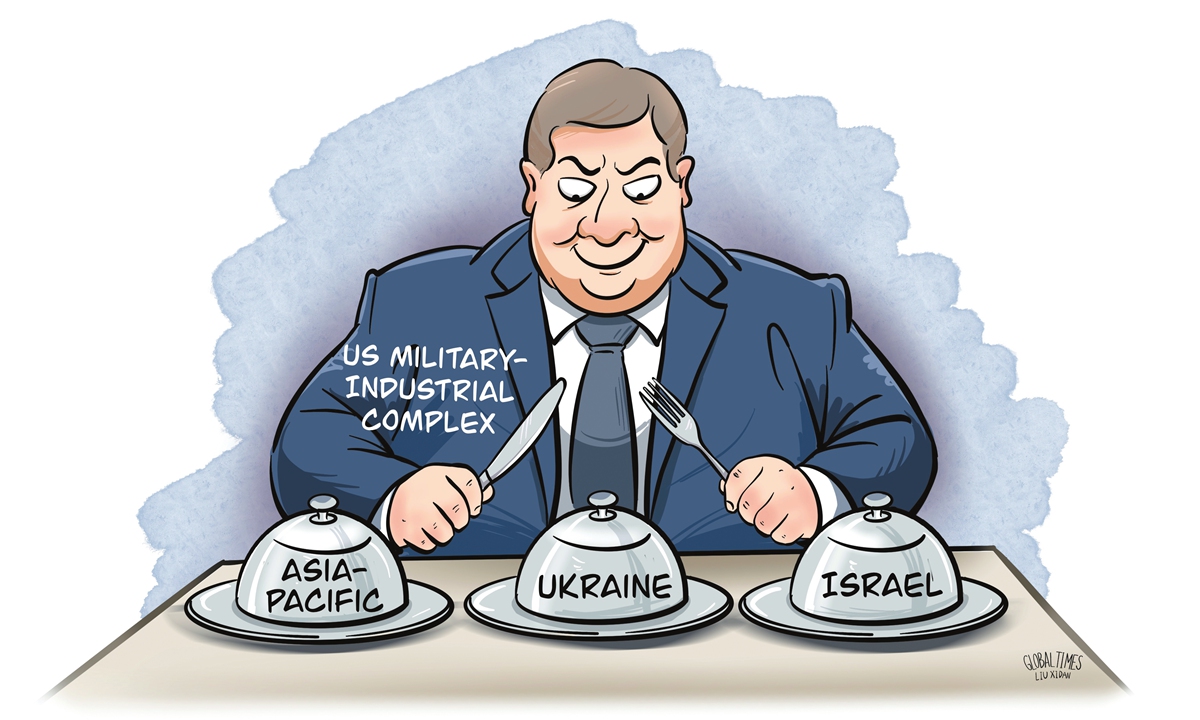
Illustration: Liu Rui/GT
The idea of "fighting on multiple fronts" is seldom good news for military strategists. History shows that countries attempting to engage on several fronts, or even just two, often face disastrous outcomes. Yet in the US, there are growing calls advocating for involvement in three concurrent wars.
The latest voice comes from Alex Karp, CEO of the data-mining software company Palantir, which is known for its work in defense and intelligence.
He warned that the US may have to wage war in three different theaters in the future - with China, Russia and Iran.
While suggesting Pentagon should continue developing autonomous weapons at full speed, he brought up an odd perspective.
"I think we're in an age when nuclear deterrent is actually less effective because the West is very unlikely to use anything like a nuclear bomb, whereas our adversaries might," because of "moral disparity," he said.
When saying the West is very unlikely to use a nuclear bomb, he might have forgotten that the US is the only country on Earth that has used nuclear bombs in wartime.
Speaking of moral disparity, among the five nuclear powers, China is the only country pursuing the policy of no-first-use of nuclear weapons.
The US, on the other hand, has been quite reluctant to even consider the initiative.
The pretense of "morality" is merely a smokescreen. The real driving force behind US' warmonger rhetoric is the military-industrial complex.
They push for conflict to boost their profits, increase arms sales, and fuel growth in related military industries. War is their business.
They couldn't care less about the outcomes of conflicts, as long as they can sell weapons. That's why they perpetuate a constant stream of threats theories for their greed.
Palantir, which builds "advanced defense software solutions for the US and allied military force," is a part of grand-scale military-industrial complex.
This May, the US Army awarded Palantir Technologies a $480 million contract to expand a data analysis and decision making tool to more military users across the globe, including five combatant commands: US Central Command, European Command, Indo-Pacific Command, Northern Command and Transportation Command.
In February, Time magazine reported that Palantir is among tech giants that "turned Ukraine into an AI war lab." It seems that Palantir isn't satisfied; it wants more wars to feed its larger appetite.
However, as US military-industrial complex continues fanning the flame, an unavoidable question arises: who will foot the bill for three wars?
For Washington, supporting Ukraine is already stretching resources thin. After the outbreak of the Israel-Palestine conflict, even artillery shells intended for Ukraine were redirected to Israel. Not to mention that the aid to Israel has only deepened the US' international reputation and moral dilemmas. With two fronts already in disarray, how can the US possibly manage a third front in the Pacific?
Those hyping three-front wars should study military history to understand how such conflicts usually end. Throughout history, forces that engaged in multi-front wars have often ended up defeated. If the US were to engage in three concurrent wars, it is likely that the military-industrial complex would prosper, while the country as a whole would bear the brunt of the suffering.
As anti-war activist Jimmy Dore said in a Fox News program with Tucker Carlson, US' enemy is not China or Russia, but is the military-industrial complex fleecing this country to the tunes of hundreds of billions and trillions of dollars.




